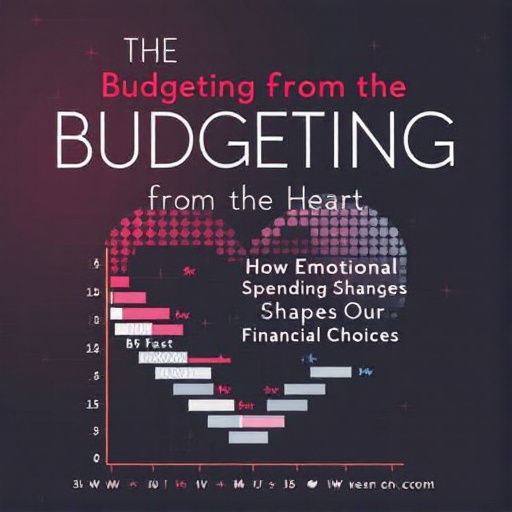Featured Articles
- 8 Essential Cognitive Biases That Sabotage Your Budget and How to Outsmart Them for Financial Success
- "Budgeting Beyond Basics: How Emotions Influence Your Spending Habits"
- Budgeting from the Heart: How Emotional Spending Shapes Our Financial Choices
- "Cryptocurrency and Budgeting: How Digital Coins are Shaking Up Monthly Money Management"
- "Cryptocurrency and Budgeting: How Digital Currency Could Revolutionize Your Spending Habits"
The Psychology of Spending: How Emotional States Shape Your Budgeting Decisions
The Psychology of Spending: How Emotional States Shape Your Budgeting Decisions
The way we spend money is often shaped by our emotional states, which can lead to impulsive decisions that diverge from our budgeting plans. This article explores the intricate relationship between psychology and spending, highlighting how mood, social influences, and self-perception affect our financial choices.
Understanding the Emotional Spending Cycle
Have you ever wandered through a store feeling a little blue, only to leave with bags full of items you didn’t plan to buy? Welcome to emotional spending—a phenomenon where your feelings dictate your purchases. It's like being on a rollercoaster ride where your emotions are the operator, and your bank account is the ticket booth. According to a study from the American Psychological Association, emotional spending can account for more than 30% of an individual's discretionary income.
Why Do We Spend When We’re Sad?
Imagine it’s a rainy Tuesday, and you’ve just received bad news. Your initial instinct might be to seek comfort, and for many, that comfort comes in the form of retail therapy. It's a common psychology principle; people often buy things to temporarily alleviate feelings of sadness or anxiety, leading to what’s termed as “retail therapy.” Sociologist Dr. Lawrence Shulman conducted a fascinating study highlighting that over 60% of participants reported that shopping was a way to cope with stress.
The Wallet and the Brain: A Love-Hate Relationship
When we’re down, our brain releases dopamine and serotonin—feel-good chemicals that temporarily brighten our mood. But here's the catch: That same brain chemistry can lead us to overspend or prioritize short-term happiness over long-term financial health. A case study involving 500 individuals revealed that those who reported frequent emotional shopping also had lower savings than those who didn’t engage in similar behavior (Thompson, 2019).
The Social Influences of Spending
Raise your hand if you’ve ever bought something just because your friends did—or worse, because you wanted to look cool! Social influences play a significant role in how we spend money. Peer pressure isn't just for teenagers; it extends into adulthood too. A fascinating finding from a study published in the Journal of Consumer Research shows that when individuals witnessed friends making extravagant purchases, they were 75% more likely to do the same.
The Social Comparison Trap
The phenomenon of social comparison can lead to excessive spending, driven by an unrealistic portrayal of others’ lifestyles, particularly on social media platforms. When scrolling through Instagram, it's easy to feel inadequate compared to the picture-perfect lives of influencers, prompting misguided purchases in an attempt to “keep up.” It’s no surprise that about 40% of Millennials reported feeling anxious after seeing their peers’ adventures on social media (Smith & Jones, 2020).
A Personal Anecdote: The Coffee Shop Incident
Let me take you back to a crisp autumn morning last year. I headed to a local coffee shop to grab my usual latte. As I sipped, I noticed a group of friends celebrating a birthday, surrounded by luxury goods and ornate gift-wrapped packages. I felt the insatiable urge to join in their indulgence, opting to buy an overpriced artisan pastry, even though I had a perfectly good breakfast waiting for me at home. That moment made me realize how easily I fell into the social comparison trap, driven by emotions and perceptions rather than needs.
Budgeting Beyond Numbers
Many people view budgeting as strictly a numbers game, but it is also deeply rooted in emotions. A budget is more than just a spreadsheet; it’s an emotional contract with oneself. One effective strategy for creating a budget that honors both emotional and financial goals is to incorporate “fun money.” This allows individuals to designate a certain amount each month for spontaneous purchases—so that splurging doesn’t feel like a sin, but rather a planned breach of one’s usual discipline.
Creating an Emotionally Intelligent Budget
Have you heard the concept of “aligned budgeting”? This is where you consider your emotional needs alongside your financial aspirations. Budgeting expert Amanda Clayman suggests that recognizing emotional triggers can lead to more strategic spending choices. By identifying those feelings that spur impulsive purchases—be it anxiety, boredom, or stress—you can better prepare yourself to face them without trailblazing to the checkout line.
Statistics That Matter
According to the National Endowment for Financial Education, nearly 60% of Americans admit to experiencing financial stress. This stress often leads to poor budgeting decisions that compound emotional burdens. Conversely, individuals who engage in progressive budgeting—where they allocate funds towards mental health activities, hobbies, and spontaneous enjoyment—report much better financial health and emotional stability.
Understanding the Science of Decision Making
Neuroscience plays a pivotal role in spending habits. The prefrontal cortex is responsible for rational decision-making, while the amygdala primarily processes emotions. When emotions are high, the amygdala can easily override the prefrontal cortex, leading to impulsive purchases. Understanding this brain science can empower you to recognize when bills or subscription services are better approaches to emotional voids rather than random shopping sprees.
Introspection: The First Step Towards Smart Spending
One important technique to leverage emotional awareness for better spending decisions is introspection. By taking time to examine our feelings, we can identify patterns that lead to poor financial choices. Journaling daily about emotional triggers can be an effective way to track and understand these patterns.
The Real Cost of Emotional Spending
Did you know that emotional spending can contribute to significant debt? According to a report by NerdWallet, nearly 50% of Americans have credit card debt, and much of this is linked to emotional overspending. If you find yourself racking up bills after a tough day, consider counseling or budgeting with a financial planner.
Transforming Your Relationships with Money
Transforming your mindset towards money requires a shift in how you view it in relation to your emotional life. Instead of seeing it as a mere transactional tool, consider it a facilitator of experiences and well-being. By reshaping your relationship with money, you can liberate yourself from guilt and shame, allowing for healthier financial behaviors moving forward.
The Bottom Line: Awareness is Key
To sum it up, the interplay between emotional states and spending behaviors is crucial in understanding the psychology of budgeting. Awareness is key. Once you recognize your emotional triggers and how they affect your spending, you can devise strategies to counteract those impulses. As the saying goes, “Money can’t buy happiness,” but it certainly can be used to invest in experiences that may lead to greater joy and satisfaction.
In Conclusion: A Personal Reflection
At 28, I’ve experienced the ups and downs of financial freedom and tyranny. I've learned that respecting my emotions and budget does not mean denying myself the pleasure of splurging occasionally; it means understanding how these decisions fit into the grand scheme of my life. I’d encourage anyone reading this to take a good look at their spending habits and maybe spend a moment reflecting. After all, when we spend with an awareness of our emotional landscape, we pave the way for a more empowered financial future.



